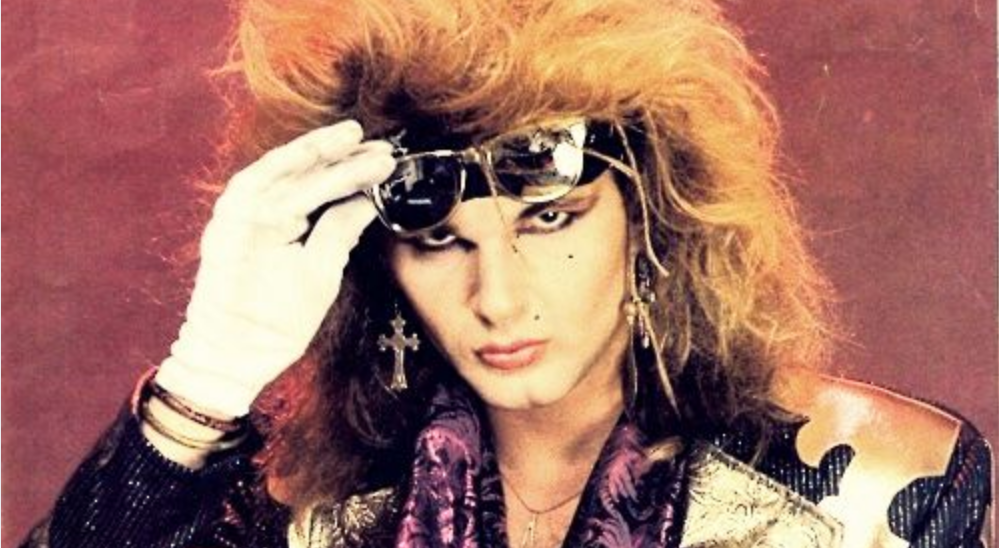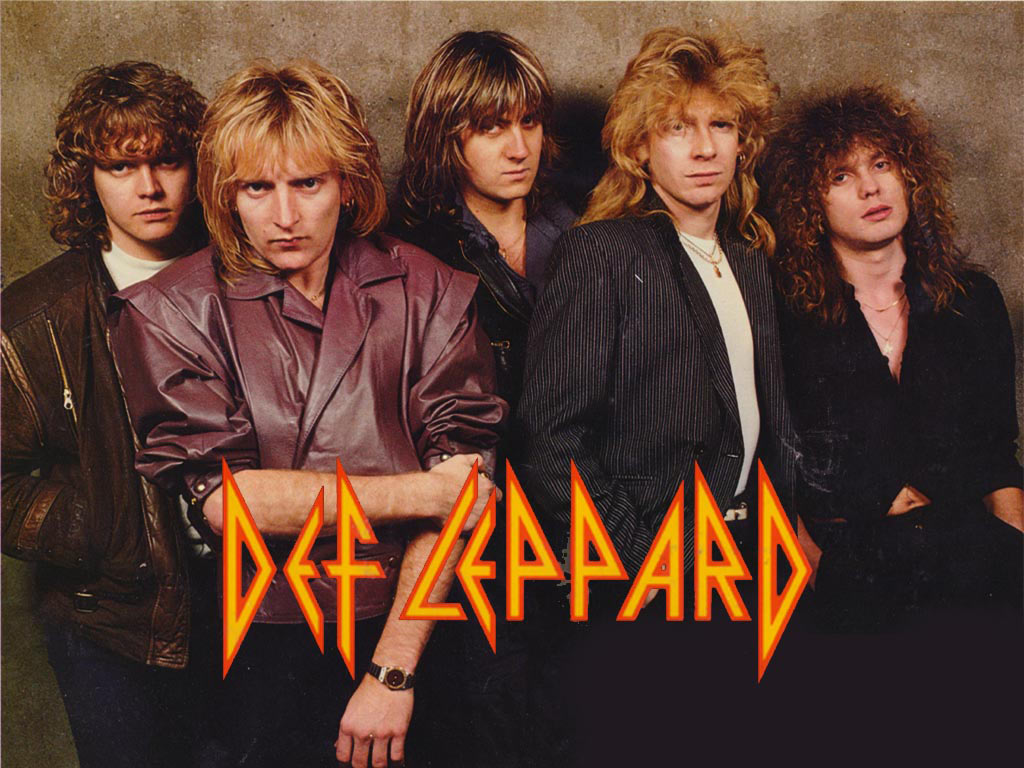the hair in hair metal
by janine annett
In a pride of lions, the male with the biggest mane rules the group. He looks more impressive to females, and more intimidating to males. Once, there was another time and place where the one with the biggest mane ruled. It wasn’t out on the Savanna—it was on the Sunset Strip. In the heyday of the hair metal scene, the man with the biggest hair was also the one who was the leader of the pack.
To some, “hair metal” has come to be a derogatory term, but the hair—the bigger, the better—was inextricably tied to the scene, for better or worse. Plenty of hardcore metal fans sneer that hair metal wasn’t “real” metal—but that’s a debate for another time. It’s easy to look back now upon the era and ridicule the look—the huge hair, the outlandish clothes, the heavy makeup worn by both the men and the women—but at the time, it was a look sported (and aspired to) by many.
Since the genre fell from cool to unfashionable, many fair-weather fans denied ever liking any of the bands, but the “hair metal” bands sold millions of albums. I stand behind my tweenage love of Poison and Bon Jovi, to name but a few of the bands of the era. And just like with many other musical genres, the good bands begat copycats—some halfway decent, many terrible. Hair metal eventually couldn’t sustain itself any longer under the weight of all that teased hair, leather pants, and hairspray.
Every musical genre, no matter how purist it claims to be, has a look. Punks wore very specific styles of clothing and hairstyles—some nearly as elaborate and difficult to achieve and maintain as hair metal hairstyles. Even grunge—which many credit for the swift death of the hair metal heyday—had a specific look. Let’s not kid ourselves here—Kurt Cobain’s hair was styled. He bleached it, he dyed it pastel colors, he put effort into it, no matter how much you were supposed to believe it was all effortless (anyone who’s ever dyed their hair with Manic Panic can tell you it’s a laborious and time-consuming process). Maybe Kurt would deny it, sure, but he had a distinct style that trickled down into the mainstream. The malls sold flannel shirts. Even the goths had some mighty big hair in the 80s—just look at Siouxsie Sioux or Robert Smith. Many of these looks evolved over time to a point where they eventually became cliché, mere parodies of themselves. Think of a stereotypical punk or rapper or Deadhead, and what you’re probably thinking of is the mainstream, commodified version of that style.
Glam rock, of course, was the most obvious stylistic and musical forefather of hair metal. Bands and artists like David Bowie, the New York Dolls, T. Rex, Slade, and so many others paved the way for the hair metal musicians’ looks and coifs. A lot of early hard rock and heavy metal bands like Alice Cooper, Black Sabbath, Judas Priest, Kiss, and Iron Maiden rocked very specific looks—lots of black, lots of leather, and lots of hair:
Take, for instance, Slade, a British band not that well known in the U.S., also heavily influenced the hair metal scene. You might know the song “Cum on Feel the Noize” and think of it as a Quiet Riot song, but the Quiet Riot version is a cover of a Slade song. Quiet Riot also covered the Slade Song “Mama Weer All Crazee Now” and another Slade Song, “Gudbuy T’ Jane”, was covered by hair metal band Britny Fox. Here they are:
The hair metal bands took the glam metal bands’ looks and sounds, and made them more mainstream. Hair metal was a combination of glam rock, hard rock, and heavy metal, with the edges sanded off just slightly. It was still a little dangerous and naughty, but served up alongside a radio-friendly, even slightly saccharine, power ballad.
Call it what you will—hard rock, glam metal, or hair metal—it was a very visual genre. MTV, of course, played a pivotal role in the rise of hair metal’s popularity. The hair metal bands of the era—Poison, Motley Crue, Guns N’ Roses, Def Leppard, Ratt, Cinderella, Quiet Riot, Twisted Sister, Whitesnake, Bon Jovi, and so many more—were in many ways products of the age of video. What started out as an anti-authoritarian, rebellious look (there’s no way you were going to a corporate job with leather pants and long hair teased and sprayed with loads of AquaNet hairspray) ended up itself becoming a kind of conformity, as any band who wanted to be part of the hair metal scene had to look the part.
*
Rikki Rockett, the drummer for Poison, worked as a hairdresser before the band made it big. According to Rolling Stone Australia (“The Last Hair-Metal Band: Inside Poison’s Never-Ending Party”), “Capitalising on Rockett’s early career as a hairdresser, they teased and back-combed their hair to nosebleed heights (“The higher the hair, the closer to stardom, don’t you know that?” Rockett says), girlied themselves up with mascara, lipstick, eye shadow and rouge, outfitted themselves with spandex, chains, leather chaps and mesh half-gloves, and carried on in such a fashion as to allow Exodus guitarist Gary Holt to call guys like them ‘sissy Nancy boys’ and Michaels to shrug off such criticisms, since they were the first gang of born-to-lose guys from small-town Mechanicsburg, Pennsylvania, to make it big, no matter what it took.” The article also quotes Bret Michaels’s take on the look. “’It’s showbiz,” Michaels said in 1987. ‘We want people to remember us. They remember guys in makeup.’” And we did:
*
Cazzie Mayorga is a hairstylist who exudes rock n’ roll—her business is called Gorgeous Rocks. Her list of clients has included Ministry, Def Leppard, The Cult, Megadeth, Anthrax, and many more. Cazzie remembers the era when men in the scene wanted, more than anything, to look like women—and eventually, everyone wanted to look the same. “Hair metal was a look,” she says. “In the alternative or punk scene, everyone would try to be different, but in hair metal they all wanted to look the same.” She thinks Nikki Sixx of Motley Crue had the best hair of the era—and a more punk-influenced style. “I still see that hairstyle today,” she says. “A lot of rockers have taken on that look, but Nikki made it. I thought he always looked cool":
As for the worst hair? “I think the worst was Man O War,” Cazzie says. Consider:
That look lives on in some ways—think of the emo kids with their very styled hair:
*
Thomas Scott McKenzie, author of the book, Power Chord: One Man's Ear-Splitting Quest to Find His Guitar Heroes, points out that despite the many questionable fashion and hair choices, the musicians in the hair metal scene were good musicians. It’s true—they had, in the parlance of the day, “chops”. In the beginning, Scott says, “it wasn’t like other genres like grunge or punk where a lack of skill was actually a good thing. These guys worked hard and were really dedicated musicians.” Over time, though, the looks and the scene became “diluted” and things got ridiculous.
Scott mentions that on the popular self-titled Whitesnake album, released in 1987, there were different musicians in the videos than the ones who played on the album. The album had a lot of “old-school blues musician” and David Coverdale fired them all before the record came out, replacing them with an “all-star” band of sorts, with members including Rudy Sarzo (Quiet Riot), Steve Vai, and others—and those were the guys in the videos with “the Jaguars and the crazy teased hair,” says Scott. “But they weren’t on that record.”
As for how the styles of the era have aged, “We’ve done that era a disservice. I don’t know that Nikki Sixx’s hairstyle was cheesier than Nile Rogers’s leisure suit from the 70s.” Or the flannel shirts and long, unwashed hair of the grunge era.
Scott cites the band Nitro as probably having the most over-the-top look of the genre:
As for his favorite hair metal looks, Scott says he preferred a more streamlined, even mullet-y look, more along the lines of Kiss, Bon Jovi, or Def Leppard:
During the early years of hair metal, the hair served as a visual marker—it was part of the image, and the image was everything within the scene. These bands really were about delivering the whole package to the audience. They had the sound, the gear, and the looks. If you went to a live show, you could expect stage antics, pyrotechnics, and more.
Of course, the genre was famous for its excesses, difficult to sustain over the long run for many bands. Addiction, abuse, misogyny, and greed are to blame as much for the genre’s downfalls as people’s changing tastes. Fans who once couldn’t get enough of the power ballad tired of it when the formula became repeated too many times. The sexism in some of the videos was completely over the top. Some of these bands soldier on today, albeit with shorter hair. There have been a few bands that have tried to replicate the sound and look of the era, but they seem to do it with a certain degree of irony. The hair metal genre may have had its difficulties, and its time has come and gone, but the hair? The hair was big. And it was glorious.
Janine Annett lives in New York, in a house full of piles of books, with her husband, son, dog, and very old cat. Her writing has appeared in places like the New York Times, McSweeney's Internet Tendency, and more. Janine's website is www.janineannett.com. The first band she ever saw perform live was Poison.











